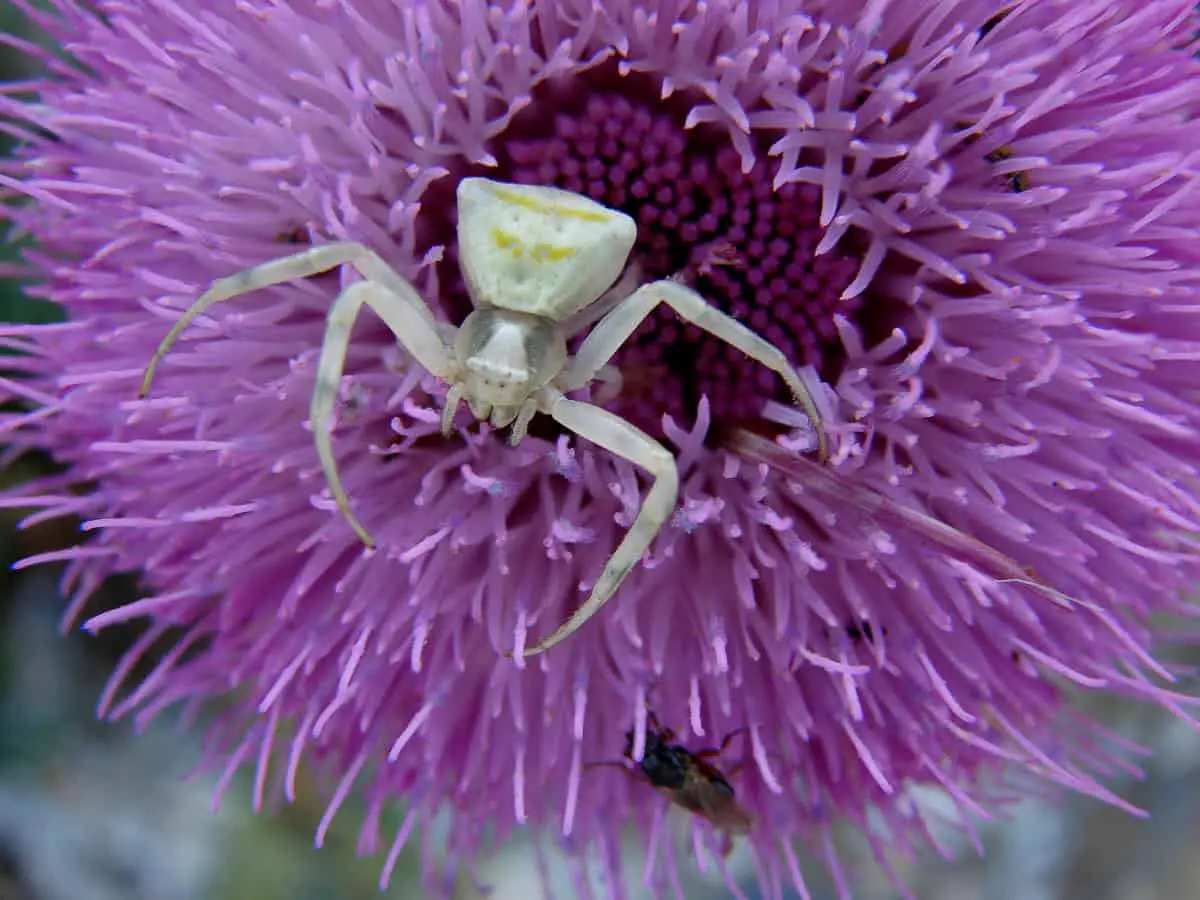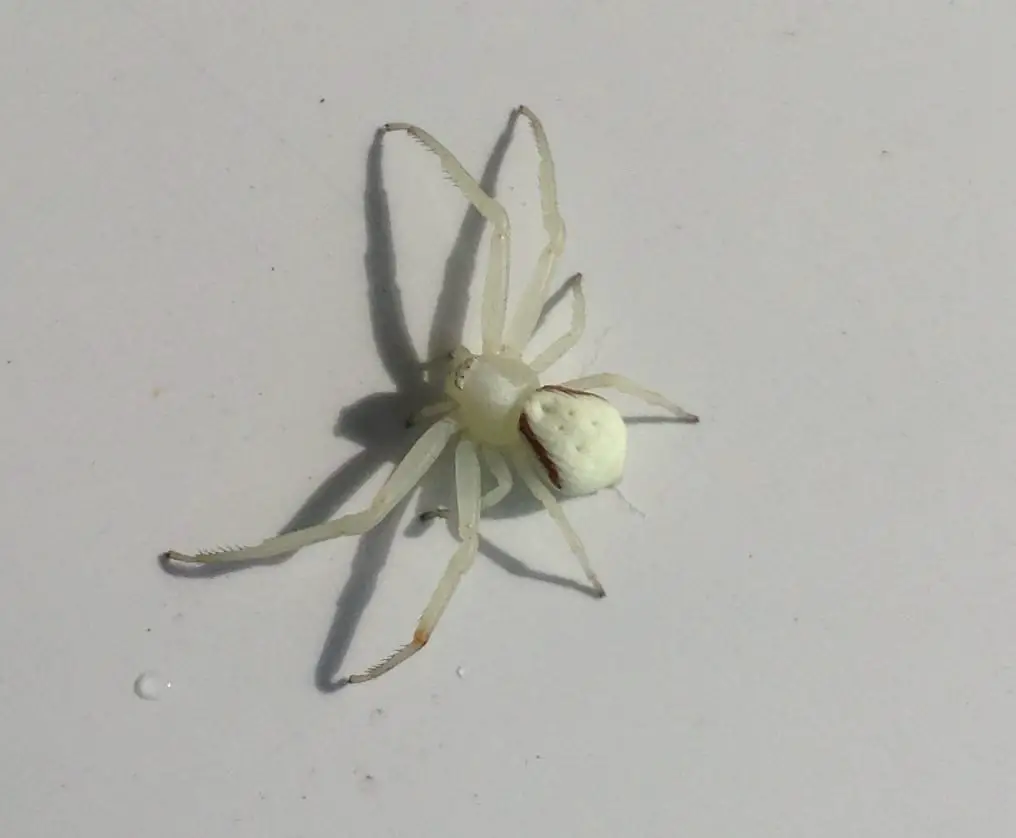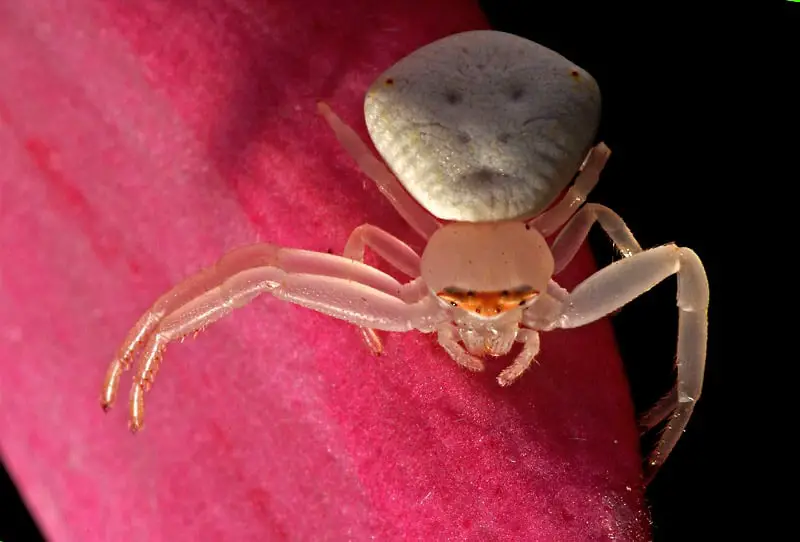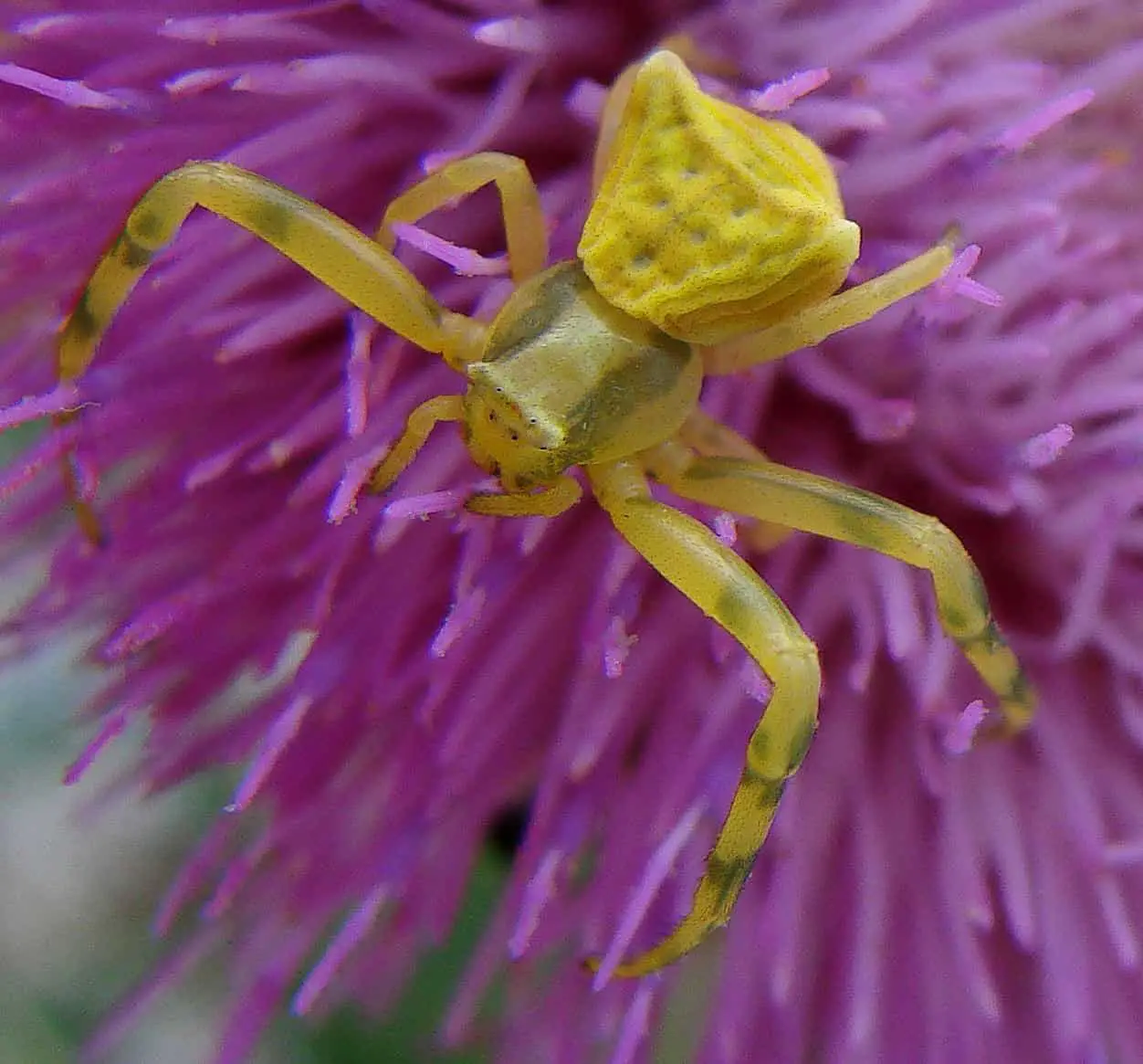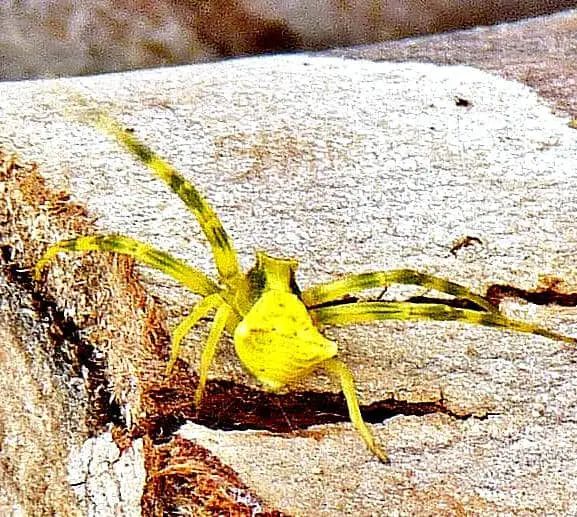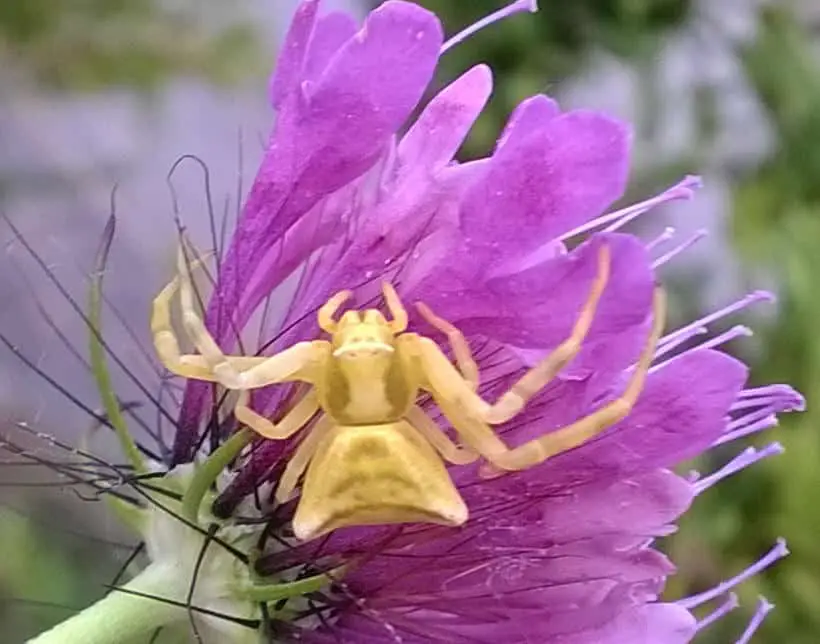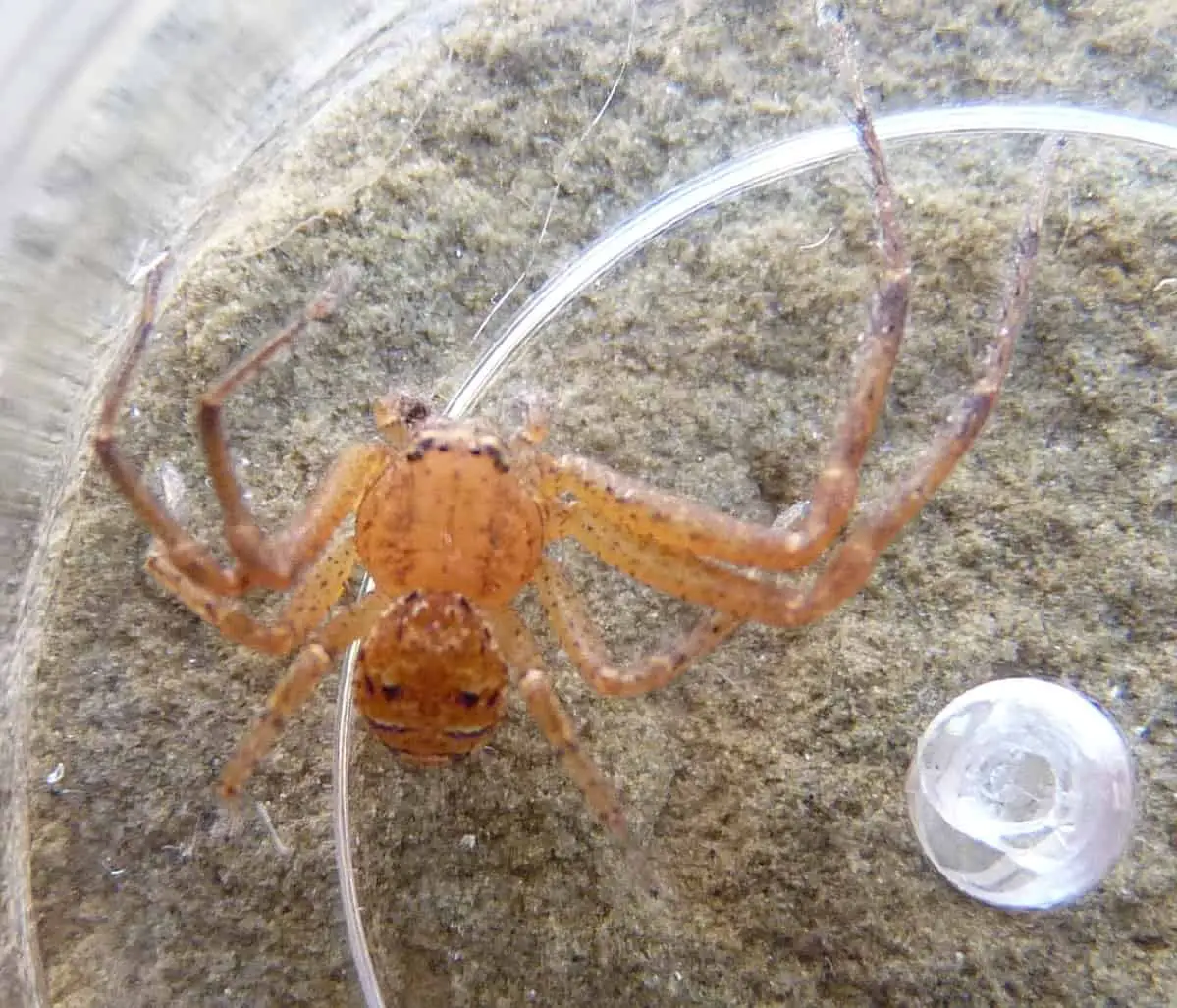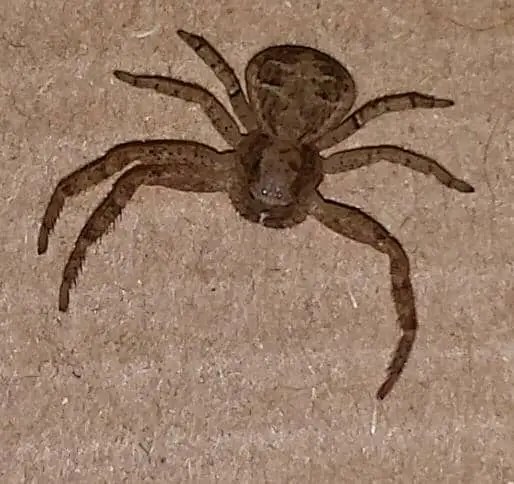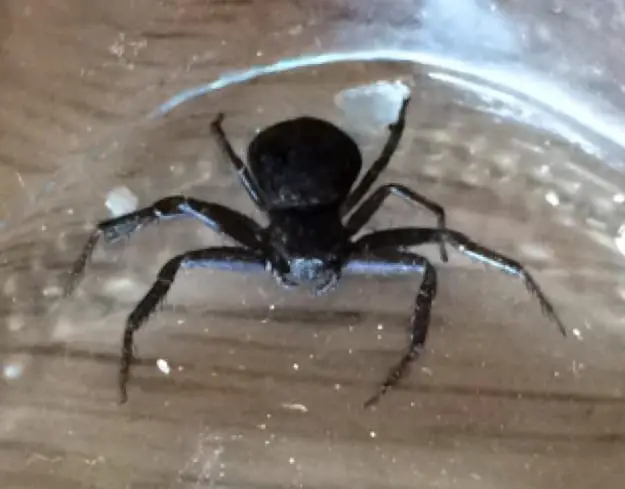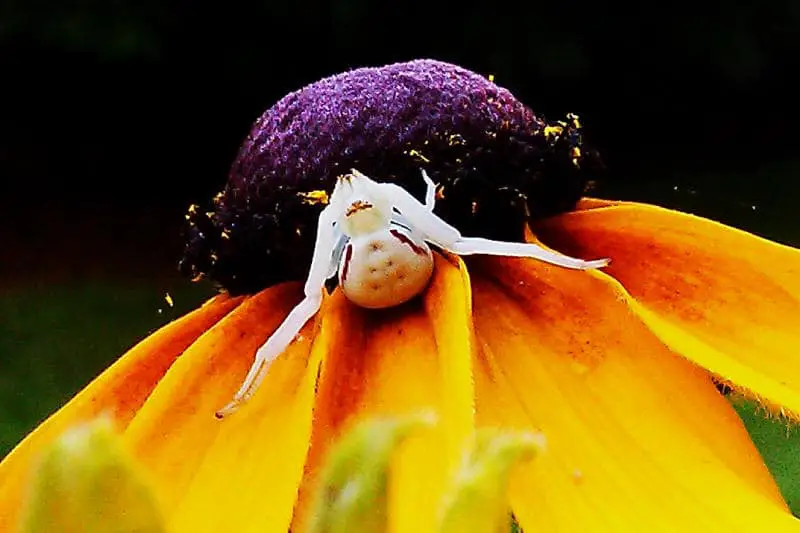Here are some photos of Crab or Flower spider photos. Crab spiders belong to the family Thomisidae. They get their name because they move sideways, like crabs. The body is not as hairy as in most spiders.
The colour of the spider is adapted to the hunting terrain they use and is mostly extravagant. They live in flowers and plants and are sometimes called Flower Spiders because they are often found inside a flower waiting for an unsuspecting bee to come along. They also live in grasses and low vegetation.
The female grows 6-7 mm. They are slow-moving spiders which do not actively hunt like Wolf Spiders. Instead, they remain stationary and await in ambush for some unsuspecting insects to land in front of them. Their bite is not dangerous to humans. The first two pairs of legs in most Crab Spiders are longer and heavier than the third and fourth pairs, and are armed with spines for holding and grasping prey. The females usually stand guard with their egg sacs. The egg sacs are fastened to the vegetation and are usually flat.
One of my viewers has sent in some great photos of different varieties of crab spiders along with a commentary on the photos. Click here to view.
Table of Contents
White Crab Spiders
Yellow Crab Spiders
Brown Crab Spiders
Goldenrod Spiders
One species of Crab Spider is the Goldenrod Spider. It is best known for its ability to change its colour from white to yellow in order to camouflage among flowers. The female is the one most often seen. She is either yellow or white, depending on where she is, with red streaks on her abdomen. The male is dark reddish-brown, with a whitish abdomen with dark red streaks. The male is smaller (about 1/8 inch) than the female (up to 3/8 inch). Goldenrod Spiders are found wherever there are yellow and white flowers, especially goldenrod and daisies. This is usually in a field or garden. They are not dangerous to man.




